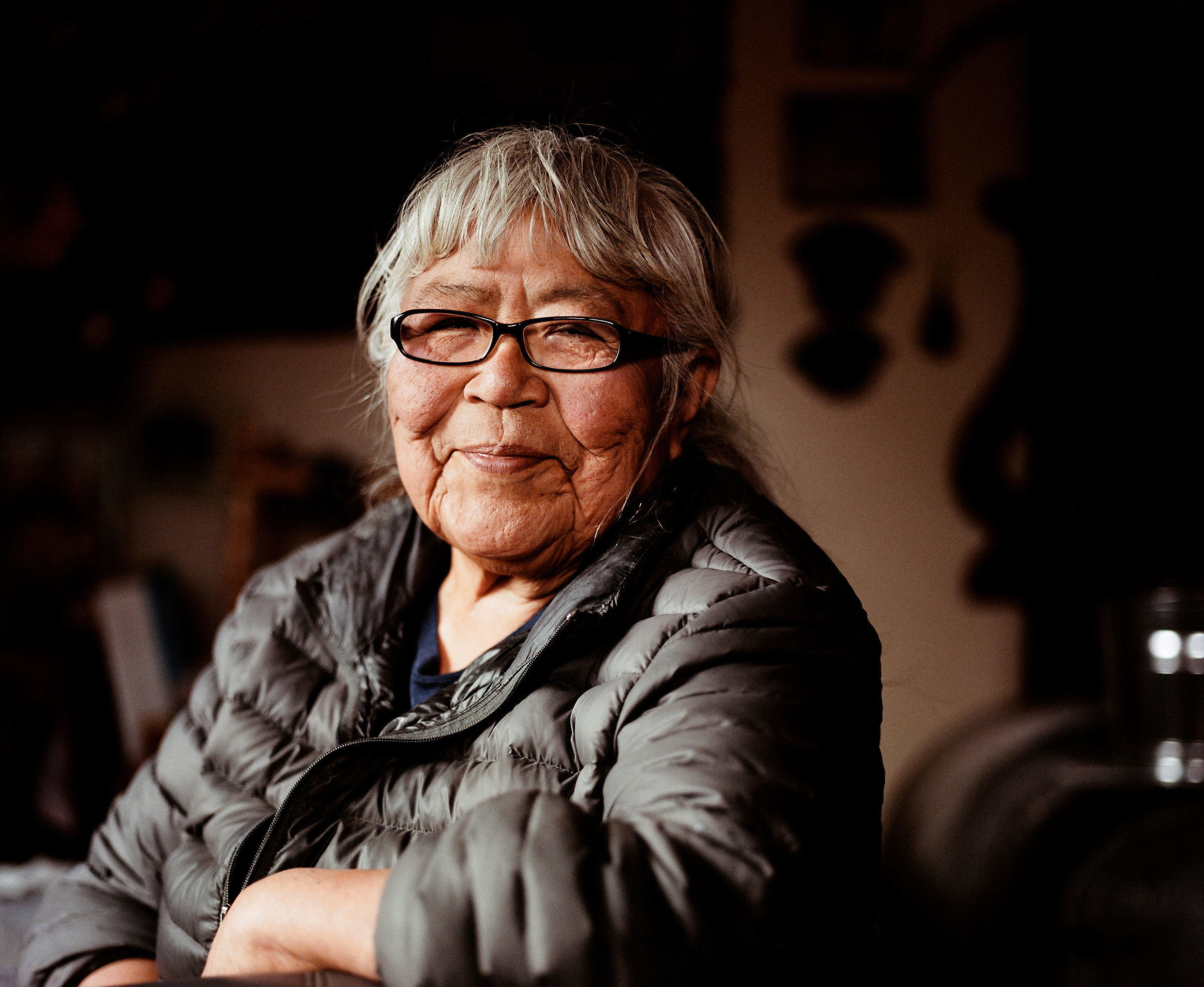This article was originally published in Yes Magazine, with the support of CRCC’s global project on engaged spirituality.
Before entering monastic life, Brother Chân Pháp Dung gave away his worldly possessions. The last step was cutting up his credit, insurance, and store membership cards. All was left was his driver’s license and passport.
“That is the moment where you realize, actually this is all a prison,” the Buddhist monk recalls. Fear may force us to seek security through money, a house, cell phone, and insurance, but he adds, “Are you secure inside?”
Pháp Dung (the name he was given upon ordination) is among a unique set of people—those whose spirituality has led them to eschew material consumption. As part of the University of Southern California Center for Religion and Civic Culture’s global project on engaged spirituality, a team of journalists and researchers have interviewed 80 exemplary individuals committed to making the world a better place. For a significant number of these people, living simply is more than enough, it is a source of freedom.
From a Hindu ascetic who transferred his pension to charity every few months, to a Coptic Christian who sold off her jewelry to help Cairo’s poor, their examples challenge our conception of “enough.”
Wisdom traditions across the world privilege restraint over consumption and generosity over greed. This common thread points to simplicity not as a pietistic virtue for true believers, but an ethical path for those of us who feel the weight of the contradiction between our values and lifestyles.
Radical Poverty
Cutting up his credit cards was not the first time Pháp Dung gave up his possessions. When he was 9 years old, he had to give away his toys and clothes with no explanation. Then, his parents woke him in the middle of the night. They were escaping Vietnam by boat.
As an ethical way of life, simple living seeks not to romanticize poverty but to challenge society’s inequities. It’s about solidarity—“living simply so that others may simply live,” as the saying credited to Gandhi goes.
After escaping Vietnam, Pháp Dung and his family eventually settled in Los Angeles’ San Fernando Valley. He and his Asian and Latino friends were bullied on the playground, but he also had wealthy White friends with pools. He felt ashamed of being Vietnamese, of living in a “poor” apartment, and even of his parents.
He went on to study architecture at University of Southern California, and was there in 1992 when civil unrest erupted around the school following the acquittal of the Los Angeles police officers who beat Rodney King. Seeing armored vehicles protect the campus took him back to his childhood in Vietnam.
After he graduated from college, Pháp Dung’s mother invited him to a mindfulness retreat for the Vietnamese community, led by Thich Nhat Hanh. The renowned Buddhist monk and peace activist had been exiled from Vietnam in 1966 for protesting the war. In the West, he taught mindfulness as a social ethic to both the Vietnamese diaspora and a wider audience. In 1982, Nhat Hanh co-founded Plum Village, a global community of mindfulness practice centers in France. The centers are now in other European countries, as well as Asia, Australia, and the United States.
The practices of mindfulness helped Pháp Dung recognize the anger in himself and work on his relationship with his family. It also formed his budding social consciousness.
In college, he had hoped to use his design skills for social good, but later found himself working on “architecture for rich people,” as he puts it. One Thanksgiving, he visited a factory for a project. He was struck that the largely Latino workforce had to work through the holiday while he got to go home. “I started seeing my profession as quite exploitative,” he says.
Pháp Dung views his choice of monastic life as a response to modern urban society—the anger he saw in himself as well as on the streets of Los Angeles.
“If you really practice mindfulness, you start to look deeply at everything,” Pháp Dung explains. “Buddhism’s core is that we teach people to be mindful so they can see what is really happening. And that could be a wonder of the universe, or that could be like, ‘This shouldn’t be happening.’”
The latter is what Sister Mary Scullion, co-founder of Project HOME, sees in her work to end homelessness in Philadelphia. Catholic sisters take a vow of poverty when entering religious life, but their chosen poverty often provides comfort and the security of institutional support. Working with people experiencing homelessness, Scullion says, “allowed me to accept my own radical poverty, my own incompleteness and areas for growth.”
“People on the street are a prophetic presence calling our society to a radical transformation of values and spirituality,” Scullion says. When she walks through Philadelphia, she sees the closed buildings and churches through their eyes.
Interbeing
On his first retreat with Thich Nhat Hanh in the mid ’90s, Pháp Dung had a “wonder of the universe” moment when he mindfully ate a salad with no dressing. “Wow! Thank you,” he recalls thinking, as he felt gratitude for nature in being able to really taste the lettuce and tomatoes for the first time.
“These things are experiential, and for me, that’s where I began to develop this kind of respect and reverence and love for material things,” he says. “You begin to not break little branches anymore. You avoid [stepping on] flowers.”
It’s falling in love with Mother Earth, in a practical rather than a romantic sense, he says—“not just like a force or as a concept, but right there on your plate.”
The standard assumption is that religious people disdain the material world in order to focus on the sacred. But for people whose spirituality leads them to be engaged with the world, the idea that we are interconnected with nature—that sacredness imbues everyone and everything—leads to a profound respect for other living beings and the environment.
 “I think it would be accurate to say that all faiths are based in nature. Nature wasn’t a different entity,” says Fazlun Khalid, one of the world’s foremost Muslim environmentalists. People in industrialized capitalist societies “had to invent environmentalism” he adds, because they lost their connection to nature.
“I think it would be accurate to say that all faiths are based in nature. Nature wasn’t a different entity,” says Fazlun Khalid, one of the world’s foremost Muslim environmentalists. People in industrialized capitalist societies “had to invent environmentalism” he adds, because they lost their connection to nature.
According to Khalid, Islam does not distinguish between sacred and secular, and the Quran is a guide on how to live in relationship with creation. If just some Muslims lived as the Quran instructs—with moderation and sharing of resources—“we could be a source of the solution, be an example to other people as well,” he says.
Despite genocide and centuries of settler colonialism, Indigenous peoples have strived to maintain their alignment with nature, including other animals.
 “Caribou is our way of life, who we are,” says Sarah James, a Neets’aii Gwich’in elder (pictured left, photo by Brian Adams). “We take care of them, and in return, they take care of us. We’re in their heart, and they’re in our hearts.”
“Caribou is our way of life, who we are,” says Sarah James, a Neets’aii Gwich’in elder (pictured left, photo by Brian Adams). “We take care of them, and in return, they take care of us. We’re in their heart, and they’re in our hearts.”
James and the Gwich’in nation are fighting oil exploration in the Arctic National Wildlife Refuge in order to protect the caribou. Colonization has forced the nomadic people to live in villages, but they still live simply and maintain the relationship that they have had with their environment for thousands of years. It’s about survival, James says. “And that’s not only for me or my history, that goes for everybody.”
Though rooted in Buddhism, the Five Mindfulness Trainings developed by Thich Nhat Hanh are nonsectarian—a global ethic, he wrote in Happiness: Essential Mindfulness Practices. Practicing them involves cultivating the insight of “interbeing,” a term he coined to describe our interconnectedness. Interbeing is not just a spiritual concept. All humans are literally made of the same elements as one another, other animals, plants, and minerals.
Contemplating interbeing, a practitioner seeks to protect life, practice generosity, love responsibly, speak lovingly, and listen deeply, as well as “consume in a way that preserves peace, joy, and well-being” in oneself, others, and the Earth.
As many as 250,000 people worldwide have committed to practicing the Five Mindfulness Trainings. Understanding how their own consumption—of a burger, a glass of wine, Facebook, or gossip—causes harm is what spurs them to give up such “toxins” and consume less.
Pháp Dung, who became ordained in 1998, emphasizes that the trainings are not rules, but practices. “The Five Mindfulness Trainings is a way of looking at yourself; it’s like a mirror that you recite every two weeks,” he explains. “You’re personally developing yourself.”
Communities of Resistance
In a talk on Buddhist teachings, or Dharma talk, to young people in 2019, Pháp Dung explained how Thich Nhat Hanh created “communities of resistance” in the face of the Vietnam War. “There’s a kind of war in the urban society, in ourselves as well,” he said.
Today, resistance involves creating change—redefining what is enough. “Not to have a bank account, what do you rely on? You have to rely on people,” Pháp Dung says. “It’s not that we do this alone, we do it together.”
Retreats are Plum Village’s primary mechanism for making change in the world, Pháp Dung says. Like the monastics, who live four to one room, retreatants also share rooms. There are chores to be done, meetings to be held, and talks to attend, but the schedule is spacious, allowing monastics and retreatants enough time to focus on the task at hand. Breakfast is silent and before lunch, a monastic recites five contemplations—reminders of where food comes from and to eat with mindfulness and gratitude, in moderation, and in such a way that preserves the planet and nourishes community.
The experience gives retreatants insights, inspiration, and practices they can take home to bring mindfulness into their daily lives. They see what it means to live the Five Mindfulness Trainings and can commit to them in a ceremony. They are encouraged to join a sangha, or community of practice, to support their practice back at home.
The monastics know that maintaining a simple, mindful life is difficult outside of a retreat center. “When you practice, you learn sometimes you have to let go and don’t be so righteous,” Pháp Dung says. “You have to live with contradiction. Like you vow not to kill but you kill all the time, if you’re aware of it.”
With an architect’s eye for design he envisions a society in which more people could live together like the monastics. He no longer builds physical structures, but as a monk, he sees his role as building modern-day communities of resistance.
Click here to read the story on yesmagazine.com.
Daysha Eaton, Chris Herlinger, and Meara Sharma contributed reporting to this article.
Megan Sweas is the editor and director of communications with the USC Center for Religion and Civic Culture.








